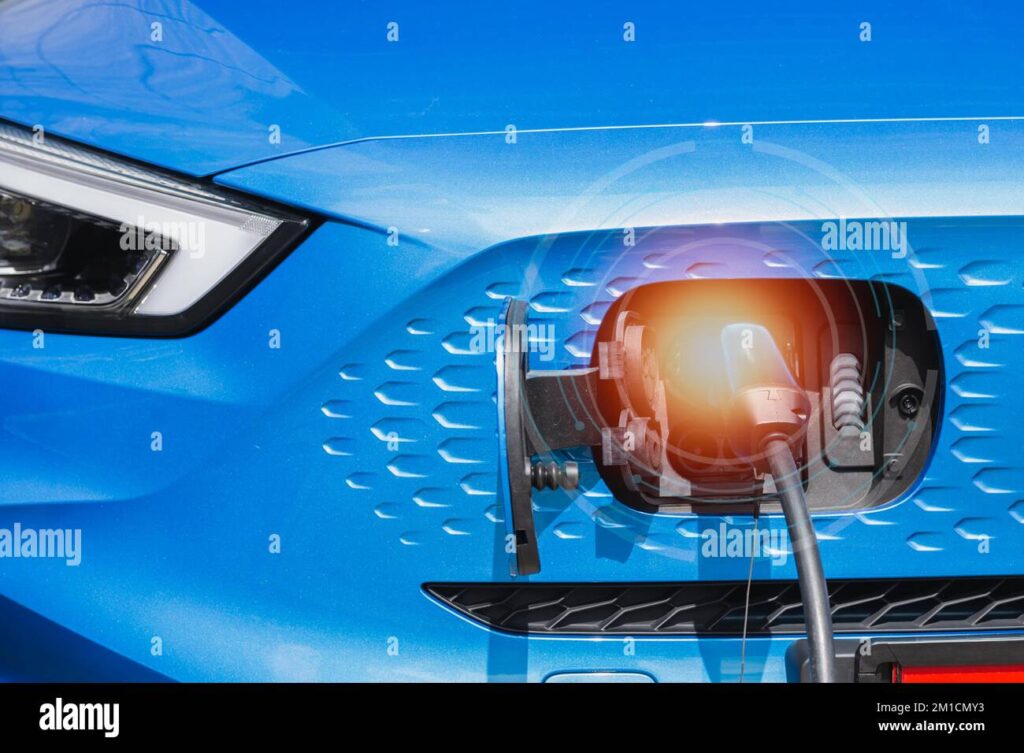
Audience
- Sentiment: Negative
- Political Group: Liberal
- Age Group: 25-45
- Gender: Both
Overview
- The U.S. Department of Transportation announced a halt to the National Electric Vehicle Infrastructure program, affecting the deployment of charging stations.
- This decision raises legal questions and uncertainty regarding future electric vehicle infrastructure developments.
- The halt could deter consumers from buying electric vehicles due to concerns about charging availability, impacting the environment and local businesses.
The Future of Electric Vehicle Charging Stations in the U.S.: What’s Happening?
Imagine you’re driving your shiny new electric car down the highway, music blasting, and the environment loving you for making a green choice. But suddenly, your car’s battery light starts blinking ominously, reminding you that it needs a charge—ASAP. You pull into a rest area expecting to find a charging station, only to discover that there’s none around. Frustrating, right? Well, the U.S. government has just taken a confusing step backward when it comes to making sure charging stations are available throughout the country. Let’s dive into what happened recently with the U.S. Department of Transportation (DOT) and explore the implications for the future of electric cars and the people who drive them.
The Big Announcement
The DOT recently revealed a significant decision in a memo to state governments: states must scrap their plans for a $5 billion program called the National Electric Vehicle Infrastructure (NEVI). To put it in simpler terms, this program was designed to help build electric vehicle charging stations across the country. So far, thanks to NEVI, around 30 charging stations have already been built, with many more planned. But now? The DOT’s memo has stopped everything in its tracks. States can’t sign new contracts, and all current plans for charging station deployment must be “decertified,” which is a fancy way of saying invalidated.
This memo is critical for a couple of reasons. First, it directly affects the future of electric vehicle (EV) infrastructure, which is desperately needed. As more people buy electric cars, they need a reliable network of charging stations to keep those cars running. Without these charging stations, drivers might hesitate to go electric—after all, range anxiety is a very real thing!
Legal Ramifications
Wait, there’s more. This sudden halt raises some serious legal questions. You see, there are established laws and rules about how the government should roll out significant policy changes, which is where things get more complicated. The Administrative Procedures Act essentially requires government agencies, like the DOT, to follow certain processes and present clear justifications before making such significant changes. If they don’t, they could face legal challenges that might delay these policies even further.
The Federal Highway Administration (FHWA), which is part of the DOT, plans to create new guidelines for the NEVI program. But here’s the catch: these new guidelines will also need to go through a period where the public can comment on them. That means there’s a chance the program could be delayed for months, which is not good news for anyone hoping to see more charging stations pop up soon.
Impact on States and Businesses
So, what does this mean for the states that were gearing up to build more charging stations? Well, although states might still get reimbursed for commitments they’ve already made, future development is entirely up in the air. This creates a cloud of uncertainty for city planners and local businesses that had their sights set on becoming part of the EV infrastructure. For instance, businesses that invested their time and money into preparing for these charging stations might now find themselves in serious trouble. Imagine planning to open a café right next to a hot new charging station, only to find out that the construction of the charging station is abruptly ending. It’s a huge bummer.
The Players Involved
Now, let’s talk about some big names in the electric vehicle industry, particularly Tesla. Tesla has been one of the leading companies in the electric vehicle market, and it has previously received funding from the NEVI program. Elon Musk, the CEO of Tesla, is also deeply involved in federal audits regarding spending cuts related to electric vehicle initiatives. This means that as the Trump administration emphasizes cutting back on programs related to electric vehicles, Tesla’s position becomes precarious, which could affect the broader landscape of electric vehicle infrastructure.
When you consider all this, it’s easy to feel worried about the future. If major companies like Tesla are affected by these new developments, then what does that mean for the industry as a whole? The uncertainty could influence people’s decisions to buy electric vehicles, which might mean fewer charging stations—a complete cycle of troubles.
Why Charging Stations Matter
To understand why all this matters, picture your community: kids riding their bikes, families on road trips, and eco-conscious citizens aiming to reduce their carbon footprints. All these efforts are great, but without proper charging stations, it becomes harder for everyone to make the switch to electric vehicles. Many people want to switch to electric but worry about how long they might have to wait to charge their cars or if they’ll be able to find a station near their homes or workplaces.
Electric vehicle infrastructure is crucial for the environment too. Charging stations powered by renewable energy can significantly reduce pollution and carbon emissions, helping to combat climate change. The more readily available these charging stations become, the more people will choose to hop into electric cars instead of gas-guzzlers.
What’s Next?
So what now? With a halt to the planned charging stations and uncertainties swirling around, many questions arise. How will states adapt to these new directives? Will companies that had jumped on the electric vehicle bandwagon withdraw their investments? Is there a way for consumers to express their need for a dependable electric vehicle infrastructure?
While federal agencies sort through these challenges, what can you do? As future drivers and even future leaders, you have the power to make your voice heard. It’s crucial to stay informed about this situation and consider sharing your opinions. Engaging in community discussions, encouraging local businesses to invest in EV charging infrastructure, or even advocating for policies that support electric vehicle growth can contribute to creating a sustainable future.
Conclusion: What Do You Think?
This situation around the NEVI program is complex and can be somewhat frustrating, especially for those of us who care about our planet and how we move around it. The U.S. government’s recent decisions remind us that infrastructure—and what we need to make electric vehicles a reality—requires consistent support and commitment.
As you follow these developments, think about your own experiences with electric vehicles and charging stations. Would you consider driving an electric car if there were enough charging stations nearby? How do you feel about the government’s role in supporting our green future? Feel free to share in the comments below; I would love to hear your thoughts!






